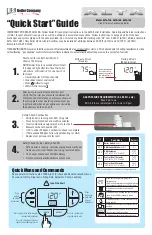
SVF
™
Series 1
Commercial Condensing Gas-Fired Water Boiler
— Boiler Manual
Part number 550-100-250/0819
106
Troubleshooting
(continued)
Figure 102
Troubleshooting suggestions for
SVF
TM
boilers
(continued)
Display
Condition
Diagnostics
Corrective Action(s)
IGNITION
FAULT
Boiler goes through (
*
)
number ignition attempts
and never detected flame.
ͻ
SVF
1500 = 2 tries
ͻ
SVF
2000 = 2 tries
ͻ
SVF
2500 = 2 tries
ͻ
SVF
3000 = 1 try
Reset by using manual reset
screen on display.
Check condensate trap for blockage allowing condensate to accumulate
inside heat exchanger.
Check ignition cable connection.
Fouled, worn, bent, or faulty igniter.
Fouled igniters can be cleaned for additional use with steel wool.
Worn or badly fouled igniters should be replaced with the proper repair part.
Igniter rods should be parallel with a 3.5mm (0.138 in) spark gap.
NOTICE
: Thin white deposits on the igniter are typical, but brown or
black deposits could be the result of flue gas recirculation. Thoroughly
inspect the venting system and termination for the possibility of leakage
or flue gas feedback into the air line.
Dirty burner and/or heat exchanger will cause high back pressure and
poor ignition.
Follow procedure in maintenance section of this manual to clean burner
and heat exchanger. Visual inspection of tubing may not be sufficient to
diagnose condition.
Check combustion settings on high and low fire and adjust per setup
instructions if necessary.
Check incoming gas pressure with boiler off and at high fire. Adjust
within limits on rating label.
Verify correct boiler model and altitude is selected in control and correct
elevation must be entered when operating above 2,00 feet.
Check ignition cable resistance. Should measure 1000 Ohms (+/- 50
Ohms).
Check for flue pipe and intake pipe restrictions or blockage.
Check burner fasteners and gaskets.
AIR PRESSURE
Switch Open
Occurs when Air Pressure
connection is open.
Reset using Manual Reset screen
on display.
High pressure in the exhaust
pipe or high vacuum in the boiler
intake or cabinet has caused the
air switch to open. The switch
is closed in normal operating
conditions.
Check boiler size selected in control against boiler rating label. Correct if
necessary to select the proper boiler size.
Check exhaust and intake pipe for restrictions or blockage.
Check condensate drain for blockage. If condensate is unable to drain
out of the boiler it can begin to block the flow of exhaust gases. Clean
the condensate collection area of the base and condensate trap. Refill
trap with fresh water.
Check the P7 connection as seen on Figures 51, page 50 &
Figure 55, page 54. Check the connections on the pressure switch.
GAS PRESSURE
SW FAULT
Gas pressure switch is open
(high or low).
Either the low gas pressure switch
or high gas pressure switch has
opened due to incorrect gas
pressure being supplied to the
boiler. Remove front door of boiler
and look at pressure switches. The
High pressure switch is mounted
to the side of the gas valve. The
Low gas pressure switch is located
on the incoming gas manifold
directly below the gas valve.
Whichever switch has locked-out
will have an indicator light on.
Switches can be reset by pushing
on plastic cover in the middle of
the dial as indicated on the switch.
Control will also need reset using
display after gas pressure switch
has been reset.
Gas pressure should always be within the limits on rating label.
Undersized gas supply pipes or regulators may cause low gas pressure
issues while the boiler is operating and possibly high gas pressure when
the boiler shuts down.
Insure the pressure regulator in the gas supply line is a lockup-type and
all installation instructions have been followed.
Ensure gas pressure switch settings are correct.
Low Pressure Switch Setting = 2 inches H2O
High Pressure Switch Setting = 14 inches H2O
Check for blockages or incorrectly piped vents from the gas pressure
regulator.
t
Low gas pressure switch can be reset when pressure has been
restored.
t
High gas pressure switch can be reset when the high pressure has
been reduced. Since the High gas pressure switch is mounted
between the safety shut off valves on the gas valve assembly.
Removing plug #1 from gas valve in Figure 82, page 90 will release
trapped gas between the safety shutoff valves. Ensure that it is safe to
release this gas in the area. Re-install plug #1.
Failure to securely install plug #1 in gas valve will allow gas to leak
which may result in severe personal injury, death or substantial
property damage.
















































